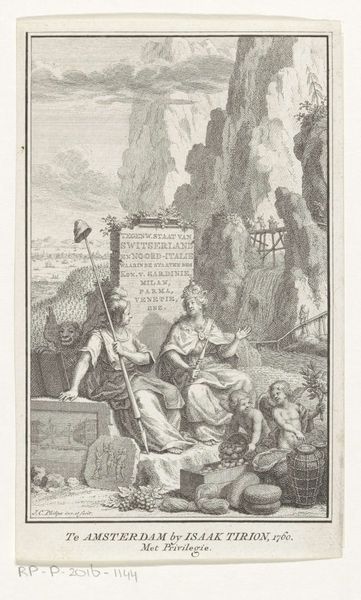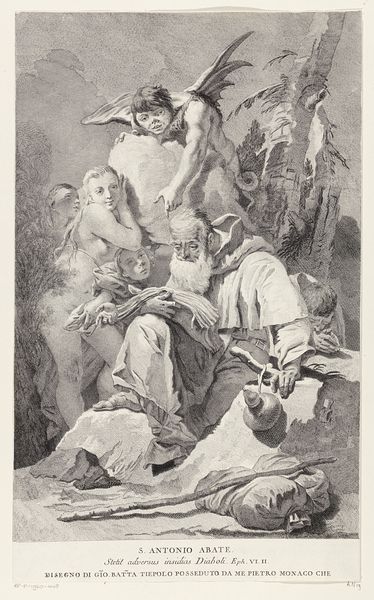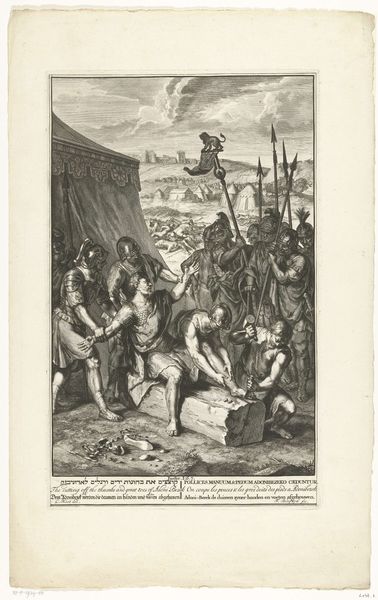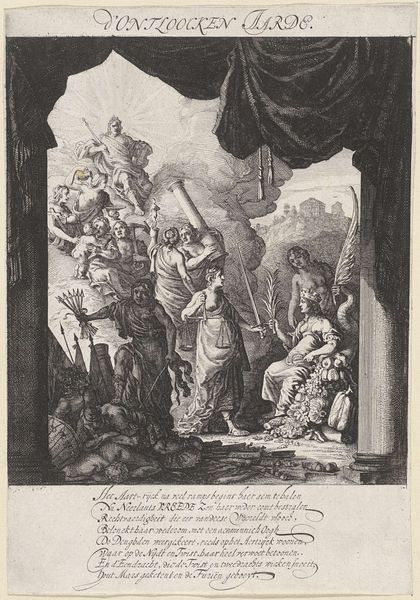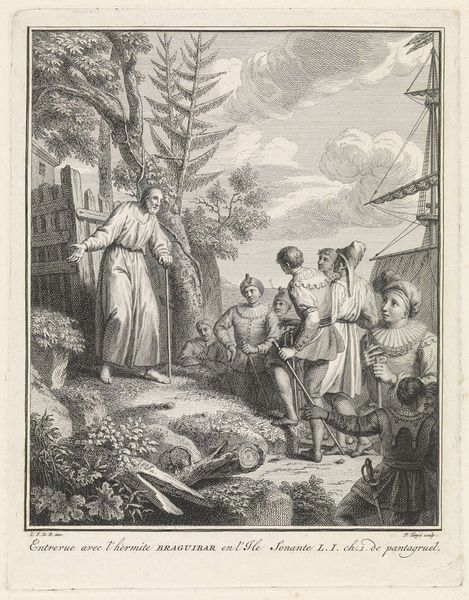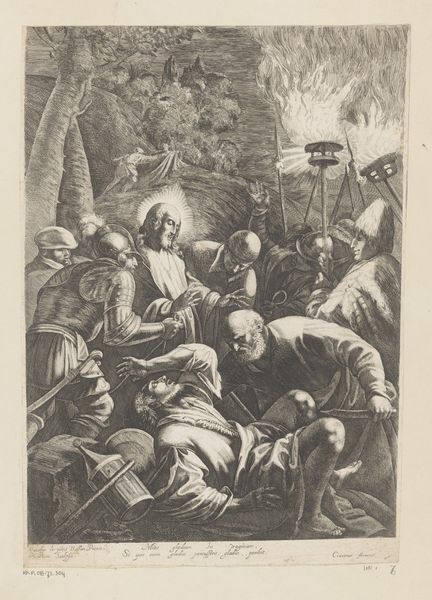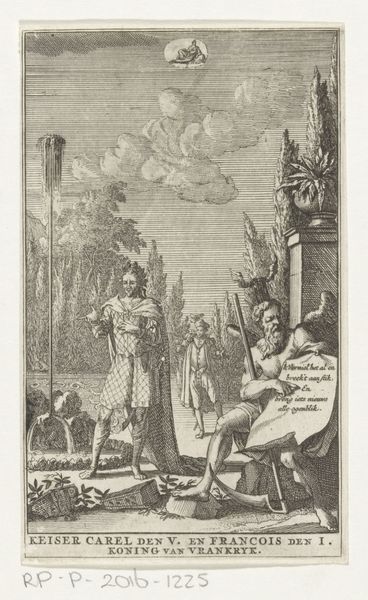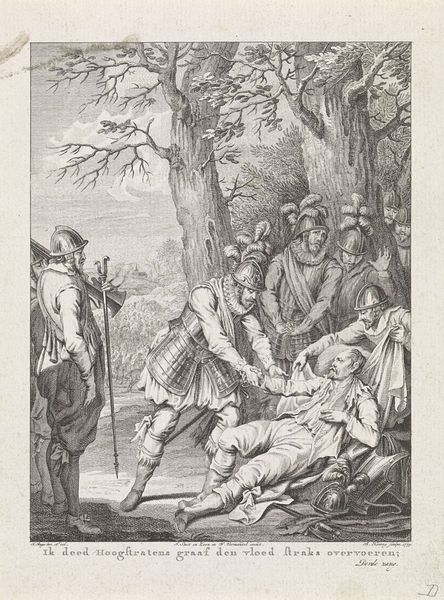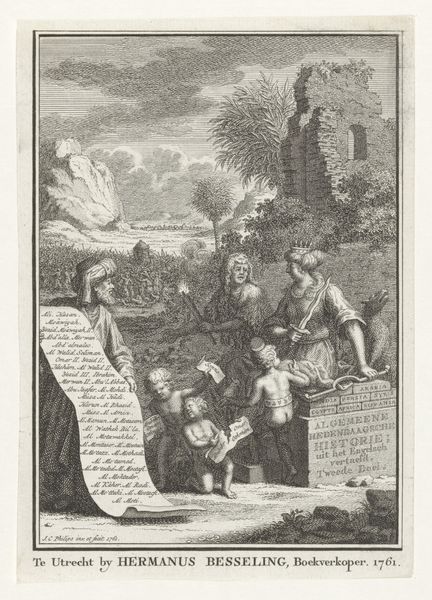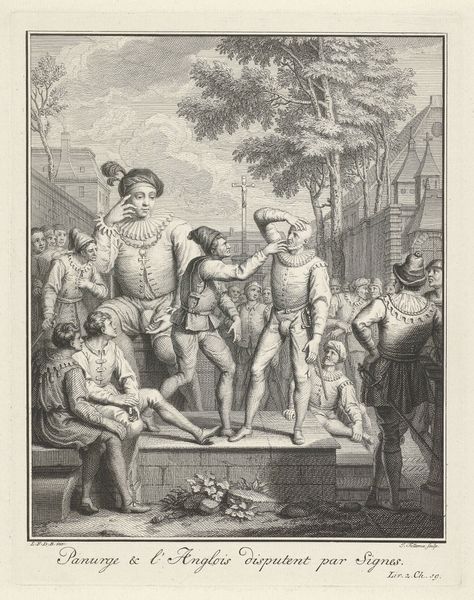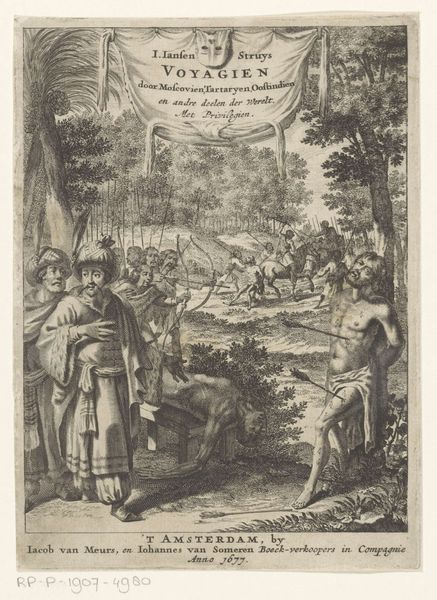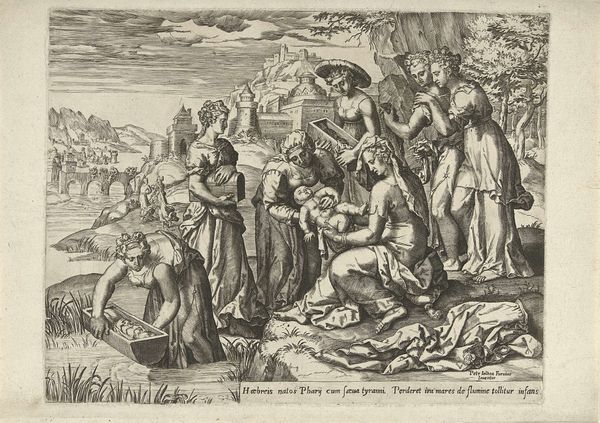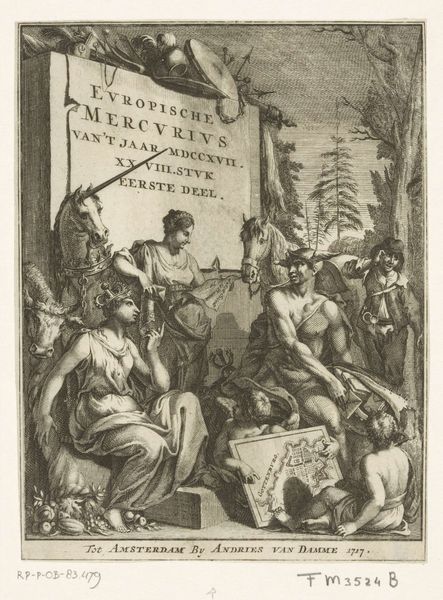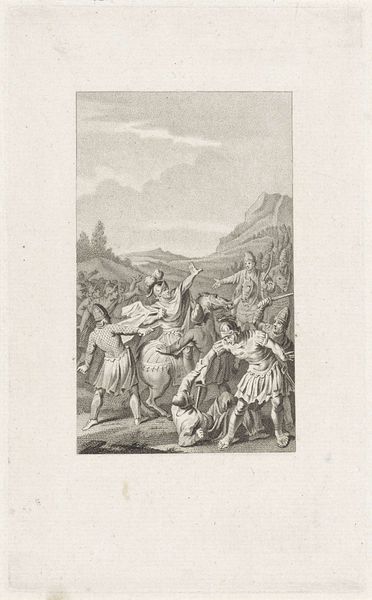
print, engraving
#
portrait
#
allegory
#
baroque
# print
#
pen illustration
#
old engraving style
#
figuration
#
line
#
history-painting
#
decorative-art
#
engraving
Dimensions: height 157 mm, width 127 mm
Copyright: Rijks Museum: Open Domain
Jan Ruyter created this title page for the "Europische Mercurius" of 1734 using engraving. The composition is a complex allegorical scene teeming with figures and symbols, creating a dynamic visual experience. The arrangement of elements, from the central figure of Mercury to the surrounding characters and objects, suggests a deliberate construction of meaning. Look at how Ruyter used this crowded composition to convey the "Europische Mercurius" which served as a comprehensive chronicle of the year's political and cultural events across Europe. Mercury, known as the swift messenger of the gods, holding a quill and sitting atop a collection of papers, might be seen as a symbol for the written word and dissemination of knowledge. Consider the lion, a symbol for strength and courage, on the lower left contrasting with other symbolic figures and objects. Ruyter is engaging with the contemporary European context, which emphasized the power of the written word, and the importance of historical documentation and reflection. Note the detailed lines and the textured effect achieved through engraving. This is not just an image but an intricate construction of visual and symbolic elements that invite us to decode its historical and cultural significance.
Comments
No comments
Be the first to comment and join the conversation on the ultimate creative platform.
